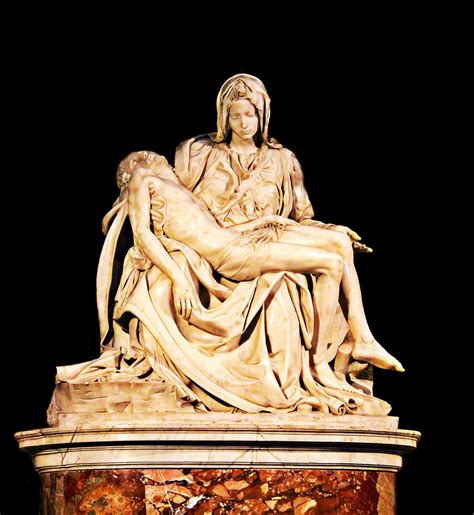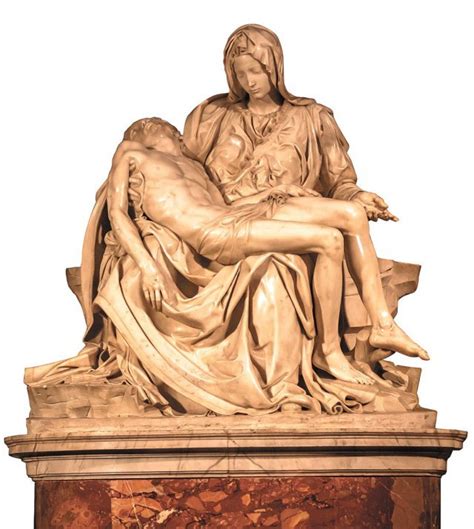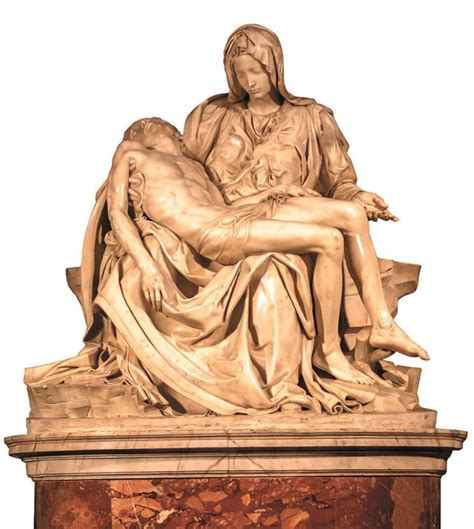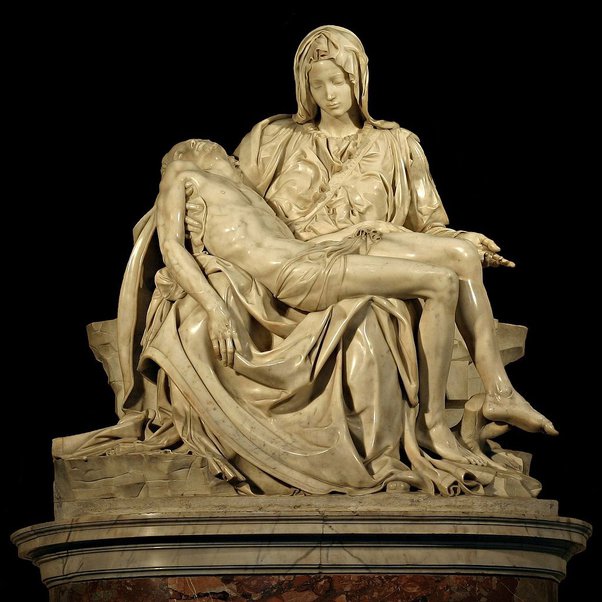Michelangelo’s La Pietà stands as a timeless masterpiece in the history of marble sculpture, embodying the pinnacle of Renaissance artistry and religious expression. Created in the late 15th century, this remarkable work captures the sorrowful beauty of the Virgin Mary cradling the lifeless body of Christ, showcasing Michelangelo’s exceptional skill in marble sculpting. Through its intricate details and powerful symbolism, La Pietà conveys deep emotional resonance and spiritual significance. This article explores the historical background, artistic techniques, symbolism, and cultural impact of La Pietà, as well as the efforts made to preserve and restore this iconic sculpture, highlighting its enduring legacy and profound influence on art history.
Join gamesfats.com for a detailed examination of this topic.
1. Historical Background: Overview of the creation and significance of La Pietà in the context of Renaissance art.
Michelangelo’s La Pietà was sculpted between 1498 and 1499, commissioned by the French Cardinal Jean de Bilhères for his funeral monument in St. Peter’s Basilica, Vatican City. This masterpiece emerged during the height of the Renaissance, a period marked by a renewed interest in classical antiquity and a profound emphasis on humanism. The Renaissance was characterized by its exploration of human emotion, form, and realism, all of which are vividly encapsulated in La Pietà. Michelangelo, only in his early twenties at the time, carved this stunning piece from a single block of Carrara marble, demonstrating his mastery over the material. The sculpture’s significance lies in its delicate balance of naturalism and idealism, reflecting the Renaissance ideals of beauty, proportion, and harmony. La Pietà not only elevated Michelangelo’s reputation as a sculptor of unparalleled genius but also redefined the artistic representation of religious themes, emphasizing both the humanity and divinity of its figures, making it an enduring symbol of Renaissance art.

2. Artistic Techniques: Analysis of Michelangelo’s marble sculpting methods and innovative techniques used in La Pietà .
Michelangelo’s La Pietà is renowned not only for its emotional depth but also for its groundbreaking artistic techniques that showcased his mastery of marble sculpting. One of Michelangelo’s most innovative approaches was his ability to create an illusion of softness and delicate texture from the hard marble. He achieved this through a combination of precise chiseling and meticulous polishing, which brought out the subtleties of human skin, the fine drapery of the Virgin Mary’s robe, and the lifeless form of Christ. The folds of the fabric appear almost translucent, demonstrating an advanced understanding of light and shadow to enhance the sculpture’s three-dimensionality.
Michelangelo employed a technique known as “subtractive sculpting,” where he meticulously removed marble from the block to reveal the figures within. His deep knowledge of human anatomy, gained through years of studying cadavers, allowed him to carve lifelike muscles, veins, and expressions that convey profound grief and serenity. He also used a method called “drilling,” where he created deep, narrow holes in the marble to define the contours of the eyes and other delicate features, adding depth and realism.
Furthermore, Michelangelo’s use of the “unfinished” technique in certain parts—such as the faintly rough edges around the base—contrasted with the highly polished finish of the main figures, emphasizing the divine purity of the subjects and their separation from earthly imperfection.

3. Symbolism and Meaning: Interpretation of the emotional and religious symbolism in the sculpture.
La Pietà by Michelangelo is steeped in profound emotional and religious symbolism, capturing the moment of sorrow as the Virgin Mary holds the lifeless body of Jesus Christ after his crucifixion. The sculpture represents both a mother’s grief and the spiritual acceptance of divine will, blending human emotion with religious devotion. The youthful appearance of Mary symbolizes her eternal purity and spiritual strength, embodying the idea of ageless beauty that transcends mortal suffering. Michelangelo deliberately chose to portray Mary as serene and composed, rather than overwhelmed by grief, to convey the Christian concept of redemption and the triumph of faith over death.
Christ’s lifeless body, with its delicate musculature and serene expression, represents his divine sacrifice and the human condition, reflecting themes of suffering, compassion, and salvation. The triangular composition of the figures is reminiscent of the Holy Trinity, emphasizing the spiritual unity between the divine and the earthly realms. The drapery folds, flowing like gentle waves, symbolize the nurturing embrace of the Virgin, offering a visual metaphor for the enveloping grace of God. Thus, La Pietà serves as a visual meditation on themes of loss, love, and redemption, evoking a deep emotional response in its viewers.

4. Cultural Impact: Influence of La Pietà on subsequent art and its place in cultural history.
La Pietà has had a profound cultural impact since its creation, influencing both the art world and broader cultural history. As one of the most iconic sculptures of the Renaissance, it set a new standard for emotional expression and technical excellence in art. Michelangelo’s ability to convey profound emotion and intricate detail in marble inspired countless artists to explore similar themes of grief, compassion, and divine sacrifice in their work. This sculpture’s influence can be seen in later Renaissance works and continued into the Baroque period, where artists like Bernini sought to capture intense emotion and dynamic movement in their sculptures.
Beyond its artistic influence, La Pietà holds a significant place in cultural and religious history. It has become a symbol of maternal love, sacrifice, and the redemptive power of faith, resonating deeply with Christian audiences. The sculpture has been reproduced in various forms, from smaller replicas to large-scale interpretations in churches worldwide, underscoring its enduring appeal and spiritual significance.
In contemporary culture, La Pietà remains a powerful symbol of human suffering and resilience, often referenced in literature, film, and other media. Its universal themes continue to speak to audiences today, reaffirming its place as a timeless masterpiece that transcends its historical context, appealing to the human experience across centuries and cultures.
5. Preservation and Restoration: Details on the preservation efforts and any restoration work done on the sculpture.
Preserving Michelangelo’s La Pietà has been a priority for art historians and restorers, given its status as a cultural and religious icon. Over the centuries, the sculpture has faced several challenges, including environmental factors and human intervention. In 1972, a tragic attack by a mentally disturbed person caused significant damage to the sculpture, particularly to the Virgin Mary’s arm, face, and veil. This event prompted a major restoration effort, meticulously overseen by a team of experts who used advanced techniques to restore the damaged areas while maintaining the sculpture’s original integrity.
The restoration team employed a careful approach, using marble dust and a special adhesive to repair the broken fragments. Modern technology, such as 3D scanning and laser cleaning, has been used to analyze and maintain the sculpture’s surface, ensuring that no further damage occurs from pollutants or environmental wear. These preservation efforts have been crucial in safeguarding La Pietà for future generations, allowing this masterpiece to continue to inspire and evoke profound emotional responses from visitors worldwide.
6. Public Reception: Historical and contemporary public reactions to La Pietà and its enduring l
Since its unveiling in 1499, Michelangelo’s La Pietà has captivated audiences with its emotional depth and technical brilliance. Historically, the sculpture was immediately recognized as a masterpiece, elevating Michelangelo’s status among Renaissance artists. The delicate balance of human emotion and divine beauty resonated deeply with both religious figures and laypeople, who saw in the sculpture a perfect expression of grief and divine love. Over time, La Pietà became a site of pilgrimage, with visitors from all over the world coming to St. Peter’s Basilica to witness its sublime beauty and experience its spiritual significance firsthand.
In contemporary times, La Pietà continues to evoke powerful reactions. Art enthusiasts and religious pilgrims alike are drawn to its lifelike depiction of sorrow and compassion. The sculpture remains a symbol of maternal love, loss, and faith, speaking to universal human experiences. Despite the attack in 1972, which briefly marred its serene presence, the sculpture’s restoration has ensured that its impact remains undiminished. Today, La Pietà is revered not only as an extraordinary work of Renaissance art but also as a timeless representation of the human condition, continuing to inspire awe, reflection, and reverence in all who view it.
Michelangelo’s La Pietà endures as a monumental achievement in sculpture, celebrated for its technical mastery, emotional depth, and profound religious significance. Through its intricate details and symbolic resonance, it has left an indelible mark on art history and cultural heritage. The ongoing preservation efforts and the sculpture’s lasting impact on audiences affirm its status as a timeless masterpiece, continuing to inspire and move viewers across the centuries.
gamesfats.com

